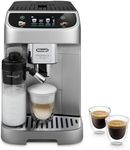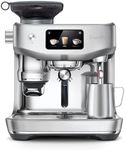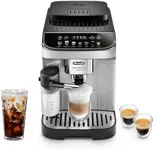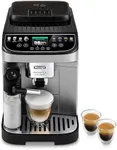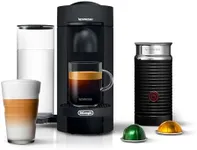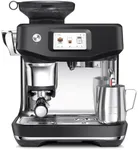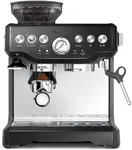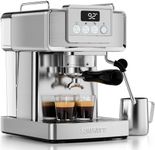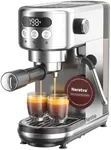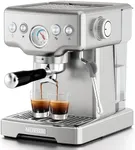Buying Guide for the Best Automatic Espresso Machines
When choosing an automatic espresso machine, it’s important to consider what you want from your coffee-making experience and how much convenience you’re looking for. Automatic machines range from very simple, press-a-button models to more complex machines that let you tailor every detail. You should think about your daily habits, how many people will use the machine, the types of drinks you prefer, and how much time you want to spend on cleaning and maintenance. Understanding the most important features will help you pick a machine that makes your ideal espresso with the least fuss.Automation LevelThe automation level refers to how much of the brewing process the machine handles itself, from grinding beans to frothing milk. Basic automatic espresso machines take care of brewing espresso but may require you to grind beans and froth milk separately, while fully automatic or super-automatic machines do nearly everything with a single button press. If you want ultimate convenience and consistency, a fully automatic model is best. If you like to control some steps or enjoy learning about coffee, a semi-automatic might suit you more. Consider how hands-on you want to be and how much you value a simple routine versus customization.
Built-in GrinderMany automatic espresso machines come with a built-in grinder, which means you can use whole coffee beans instead of pre-ground coffee. The grinder’s quality affects the taste of your espresso, as fresh grinding releases more flavor. Grinders vary in their adjustability and grind size uniformity. High-end machines have better grinders with more control, giving you the chance to experiment with taste. If you cherish fresh espresso and want simplicity, choose a machine with a good built-in grinder, but if you already own a great grinder or prefer pre-ground coffee, this might be less important.
Milk Frothing SystemThe milk frothing system determines how you prepare milk for drinks like lattes and cappuccinos. Some machines have automatic milk frothers that make creamy foam at the touch of a button, while others include a manual steam wand requiring you to froth the milk yourself. Automatic systems are better if you want consistency and need to prepare milk drinks quickly, while manual wands offer more control over milk texture—a preference for those who like to experiment or prepare specialty drinks. Choose based on how often you make milk-based drinks and how much effort you want to put into the process.
Drink CustomizationCustomization features let you adjust shot strength, temperature, milk texture, and cup size to suit your personal taste. Machines with more customization offer user profiles and memory settings, so everyone in the household can have their favorite drink at the touch of a button. If you like experimenting and want café-quality drinks at home, pick a machine that lets you tweak these options. If you just want a solid espresso every morning, a machine with simple, preset options may be all you need.
Water Reservoir SizeThe water reservoir size tells you how much water the machine can hold before needing a refill. Larger reservoirs are useful if you make several drinks a day or entertain guests—less refilling means more convenience. If you only make one or two drinks each day, a smaller tank could be fine and might make the machine more compact. Match this feature to your coffee habits and available counter space.
Cleaning and MaintenanceEase of cleaning depends on how much the machine automates this process and whether it has parts that are easy to remove and clean by hand or in the dishwasher. Some machines offer automatic cleaning cycles for the milk system, brewing head, and descaling. If you prefer low-maintenance appliances or don’t like cleaning, look for machines with features that reduce the amount of manual work needed. If you don’t mind a bit of upkeep, you might have more choices in design and price.
Size and DesignEspresso machines come in various sizes and styles to suit different kitchens and personalities. Larger machines offer more features and bigger reservoirs but take up more counter space. Compact models fit small kitchens but may sacrifice some functions or capacity. Design also affects how a machine looks on your counter—choose one that matches your kitchen style and fits comfortably in your available space.
